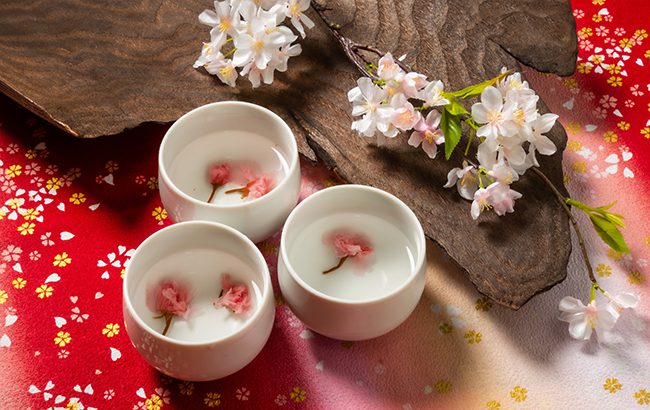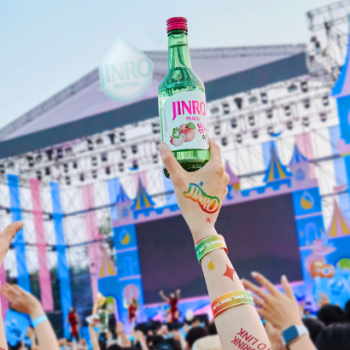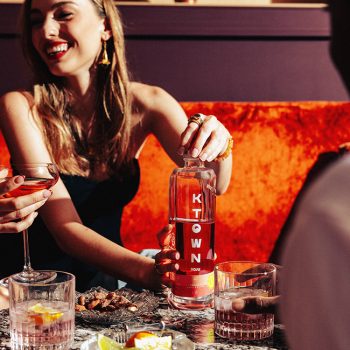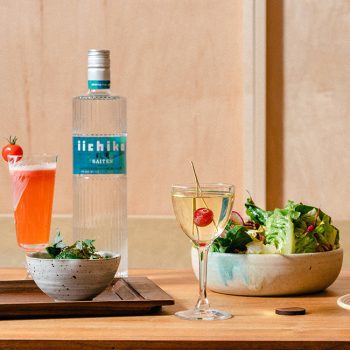Shochu and soju take on the world
By Nicola CarruthersShochu and soju brands are keen to increase their audience of potential consumers in overseas territories, but first they must boost people’s knowledge of their categories.

*This feature was first published in the May 2025 issue of The Spirits Business magazine.
“Five years ago, people didn’t know the difference between soju from Korea and these traditional spirits from Japan,” says Christopher Pellegrini, referring to shochu. But today, Pellegrini, the American-born author of The Shochu Handbook, believes this is starting to change, with more consumers being aware of what shochu is and an increased willingness to learn about it.
Any confusion over the two Asian spirits has also been somewhat cleared up in the US in recent years. In California and New York, new laws were passed that reclassified shochu to allow lower-ABV iterations of the spirit (24% ABV and under) to be sold alongside beer and wine. The new laws removed confusing legislation that saw it mislabelled as Korean staple soju in California’s bar and restaurants and by New York retailers with a beer-and-wine licence.
Shochu has started to gain recognition among bartenders, with more venues putting the Japanese spirit on their cocktail menus in serves such as a Chu-hai (shochu Highball). Meanwhile, soju’s status as a lower-alcohol product (typically 16%-25% ABV) has helped it gain fans among younger health-conscious consumers, and brands are seeking to attract this generation through partnerships with celebrities and music festivals.
 The world’s biggest-selling spirit, Korean soju Jinro, is on a mission to establish the soju category internationally. “In 2017, when we first announced our vision to globalise soju, most of our overseas consumers were Korean expatriates,” says Hwang Jung-Ho, managing director of HiteJinro’s overseas business. He notes that recent global research showed that over 90% of respondents are now aware of soju, and more than 80% of consumers are local. “In July 2024, we updated our vision to focus on the ‘popularisation of Jinro’, and are now executing strategies aligned with this direction. We strongly believe Jinro has the potential to become a mainstream spirit in the global liquor market.”
The world’s biggest-selling spirit, Korean soju Jinro, is on a mission to establish the soju category internationally. “In 2017, when we first announced our vision to globalise soju, most of our overseas consumers were Korean expatriates,” says Hwang Jung-Ho, managing director of HiteJinro’s overseas business. He notes that recent global research showed that over 90% of respondents are now aware of soju, and more than 80% of consumers are local. “In July 2024, we updated our vision to focus on the ‘popularisation of Jinro’, and are now executing strategies aligned with this direction. We strongly believe Jinro has the potential to become a mainstream spirit in the global liquor market.”
Since 2017, Jinro says the global soju market has grown by more than 2.5 times, with over one million monthly Google searches for soju-related keywords. Jinro’s sales volumes in the first quarter of 2025 rose by approximately 41%, driven by “sports sponsorships, participation in large-scale festivals, and collaborations with global IP”. The company’s partnership with London’s All Points East Festival is described as key to shaping the brand’s global image, by targeting “trend-conscious Gen Z and Millennials”, says Jung-Ho.
The world’s second-biggest soju producer, Lotte Chilsung Beverage Co, owner of Chum Churum and Soonhari, is also working on achieving global recognition for soju.
“Our goal is not simply to export Korean soju, but to expand the category of soju itself in the global liquor market,” says Won-kuk Lee, part of the soju brand marketing team at Lotte Chilsung Beverage Co.
“We plan to achieve this goal by expanding contracts in local production, while licensing and collaborating with global IPs to form brand images suitable to more global markets. Through this process, we hope that consumers worldwide will perceive soju as a cultural experience.
“In the US and Canada, where interest in Korean cuisine, music and spirits is growing significantly, we plan to expand with cultural-based consumer content.”
Decreases predicted
Major producers of soju and shochu are making efforts to expand outside of their home markets to increase sales, with the US being the most prominent one.
IWSR data showed volumes declines for shochu globally with a compound annual growth rate (CAGR) of -3% between 2018 and 2028, and a 0% CAGR for soju globally over the same period. Forecast figures (calculated before the impact of potential tariffs) also estimate continued decreases for both categories, with a decline of 1% CAGR (2023-2028) for soju, and a 4% drop for shochu.
IWSR notes that the shochu market is likely to continue its downward trajectory because of Japan’s “ageing population” and the gradual shift to “trendier categories and/or drinking less alcohol”, says Emily Neill, IWSR chief operating officer of operations and research.
Neill was more positive about soju because it benefits from a “huge cost advantage over other spirits due its local production and a favourable tax regime, with a 36cl bottle [being] available for the equivalent of US$1”.
Outside of its home market, Neill says soju consumption in the US is growing from a small base (2018-2023 CAGR volume was up by 8%). It is also growing in Thailand and the Philippines, but from an even smaller base.
The US has become a major focus for Lotte Chilsung Beverage Co, which partnered with Spirit of Gallo on a distribution deal for Soonhari, Chum Churum, and Saero from January 2024. “While the export volume of soju to Japan, the largest importer of soju, is levelling out, the scope of soju exports to the US is growing rapidly,” says Lee, who believes the US will become an “important market in the coming years”.
Since Gallo’s US distribution deal, the company has seen 700% volume growth in the market in the year to March 2025.
Lee mentions the “rapid growth” of flavoured soju brand Soonhari in the US, while zero-sugar brand Saero is “leading the growth of Lotte’s soju brands. In 2024, our soju brands increased brand awareness beyond Asia and into the North American market.” He noted that the company’s soju exports rose by 3% last year. “We also have reflective awareness from the growth in the popularity of K-pop and K-dramas,” Lee adds.
Bridging the gap between the US and Korea, Yobo Soju was founded in 2015 by Korean-American entrepreneur Carolyn Kim, who aimed to create a modern American-made soju. Yobo Soju Luxe (23% ABV) is made in California from a blend of Northern California wine grapes, Calrose rice, and organic wheat.

The company’s portfolio also includes “light and fruity” flavoured soju brand KTown, soju-based apéritif line Kish (created with Top Chef winner and host Kristen Kish), and a sparkling ready-to-drink range.
John Noe, CEO of Yobo Spirit House, believes the soju category benefits from its lower-ABV, wide range of flavours, and “fun and playful” nature when compared with spirits like Japanese whisky and sake. “It’s really having its moment in the US,” he adds, pointing to the rise of K-pop, K-drama, and Korean cuisine. “I think the potential is pretty big.”
Changing perceptions
Noe likens the soju category to Tequila’s reputation “back in the day”, when it was seen as a cheap spirit consumed at college. Noe notes that since then brands like Patrón have helped to elevate the Tequila category, and he believes soju’s image as a cheap drink is “starting to shift”.
Yobo’s focus is solely on the US, and not just on targeting the nation’s Asian population either. “It’s important to look for accounts that aren’t just the Asian account, but do represent a diverse mix of people, especially in the US, where the Asian population is 9% of the country,” he explains. “We really want to make sure that we’re appealing to a much larger audience.”
He points to the importance of more brands coming into the category and bringing greater attention to soju, particularly as the category is dominated by imported brands. “Whenever new soju or Asian-American spirits brands pop up, we get pretty excited about that because it makes a bigger place for the category, and rising tides float all boats.”
Famous faces have played a role in boosting sales of soju and shochu. In 2021, Jennie Kim of the K-pop band Blackpink was announced as the face of Chum Churum. Meanwhile, pop star Junon (from the Japanese boy band Be:First) joined Nikaido shochu as its first US brand ambassador in March 2025.
The previous month saw Nikaido become the official shochu of professional baseball team the Los Angeles Dodgers. The move could increase the brand’s presence in the city, which has the second-highest Japanese population in the US after Honolulu. According to Nikaido, the Dodgers have long embraced Japanese culture, and its 2025 roster is full of Japanese stars.
“We’re actively exploring partnerships across music, hospitality, mixology, and cultural events,” says Yuichi Nikaido, eighth-generation president of Nikaido Shuzou Co. “Our focus is on meaningful collaborations that deepen the connection between shochu and contemporary culture.”
Rise in interest
Nikaido made its US debut last year, with the company saying that awareness of and interest in shochu in the market rose by 40% in 2024 (according to a Datassential report).
Nikaido’s president believes the US has “significant potential for rapid growth”, with a “sophisticated spirits and cocktail culture, as well as a strong appetite for new flavours and global trends. With growing interest in Japanese culture, it offers an ideal platform to introduce shochu as Japan’s national spirit to a broader international audience.”
The director of the Japanese Sake & Shochu Makers Association (JSS), Hitoshi Utsunomiya, says China is the biggest market for shochu (outside of Japan), followed by the US. As such, the association mainly focuses on the US and Asia, but Utsunomiya believes there is potential for growth in the UK and France.
Nikaido is also looking to expand into Europe and Asia, with the goal of “sharing the diversity and depth of shochu with drinkers worldwide”, says Nikaido. He also mentions “promising” markets with “strong food cultures and an appreciation of craft spirits”, such as France, Germany, Taiwan and Australia.
In the US, Nikaido is considering launching new higher-ABV shochus to emphasise both “drinkability and mixability”. The company plans to develop “signature cocktails, share original recipes, and engage in events and other activations” in the on-premise.
In recent years, shochu has started to make waves in the on-trade, with the Japanese spirit getting more attention in renowned venues like New York’s Katana Kitten, upmarket Japanese restaurant chain Roka, and Chicago’s Kumiko bar. For the second year in a row, shochu brand Iichiko launched its Irodori cocktail competition, challenging bartenders to use its 43%-ABV Saiten expression in cocktails. The UK Bartenders’ Guild held its fourth annual Great Honkaku Shochu & Awamori Contest in March 2025, sponsored by the JSS.

For Iichiko, the aim is to “become a go-to base spirit in cocktails across the US bar industry”, according to general manager Ken Oka. “By collaborating with bartenders to feature Iichiko in their cocktails, we aim to expand awareness of Iichiko Shochu to a broader audience,” he explains. “While many distilled spirits enjoy international recognition, shochu remains relatively under the radar. We’re focused on positioning Iichiko in top US bars as part of our larger strategy to elevate it as a global spirit.”
The company says US sales have been strong, with the brand selling more than 20,000 cases in the past year, driven by Saiten and Iichiko Silhouette (its lighter 25%-ABV shochu). Saiten was launched exclusively in the US in 2019, with plans to make it globally available from 2025.
Oka adds: “Our next strategic focus is on Europe and Singapore, where shochu is still in the early stages of recognition. We plan to increase our presence in key bar markets, particularly in London and Singapore, to further elevate shochu’s visibility and accessibility.”
Lack of awareness
The main challenge for shochu is people’s low awareness of the category, says Oka. “While it’s gaining recognition in the bar industry, it’s still a niche product for most consumers. Education is essential, and we continue to create opportunities to familiarise both bartenders and consumers with shochu. While progress will take time, we’re confident that our efforts will lead to widespread recognition.”
He believes that the category has the potential to become a mainstream spirit, citing its versatility and ability to work well in both low-ABV cocktails and high-proof drinks. “We are confident that through continued engagement with bartenders and the broader cocktail community, shochu will follow a similar path to mezcal in terms of mainstream adoption.”
Utsunomiya at JSS notes that shochu distribution “has many problems”, explaining that usually shochu distributors are also Japanese food distributors, so they have “no connection to bars”, meaning bartenders do not have access to good-quality shochu.
Like Oka, shochu expert Pellegrini believes consumer awareness is the biggest challenge for the Japanese spirit, citing the need for “a lot more [marketing] support from deep-pocket entities. As soon as you leave Japan, it’s a completely new category. We need more resources to get the word out. People are hesitant to put their money where their mouth is. You can put that right at the Japanese government’s feet, because they’ve done a lot to promote sake, but they’ve been a little bit hesitant to go after this potentially much larger fish. There’s more shochu and awamori sold in Japan every year than sake. It’s a bigger part of the economy – it’s kind of weird they haven’t thrown their weight more behind the promotion internationally.
“I think that’s going to change, but it often comes because of the blood, sweat and tears of the little guy who, over 15 to 20 years, is hitting the boots on the pavement and doing the work, and then it can finally get some momentum. That’s when all of a sudden people are like, ‘Oh, this is a safe bet. Now, let’s go for it’. So I think we’re there right now.”
Pellegrini is envious of the sake industry, which has “armies of people out there doing events, account activations, and getting the word out in an incredibly effective way”, adding that this is not the case for the shochu industry.
He continues: “I think suppliers need to help support and be more involved, and I would say unabashedly to the shochu and awamori industry – listen, nobody knows what shochu is yet. So let’s not worry so much about our own individual products. Let’s push the entire category for the time being. Ten years from now, you all can fight like cats in a bag over territory, but nobody even knows what shochu is, let alone your specific brand. It really is about reset, resources, time, energy, money – and that’s a big challenge.”
How do you balance appealing to global consumers while staying true to your local market, heritage and traditions?
Ryan McFarland – chief commercial and strategy officer, Drinksology Kirker Greer
“With Ukiyo Japanese Spirits, we see no contradiction between appealing to a global audience and staying true to our roots. In fact, it’s quite the opposite. The world is more curious than ever about authentic spirits with a story, and Japan’s distilling heritage offers something unique. We ensure that everything from the botanicals to production reflects traditional craftsmanship and local provenance. We consider how modern drinkers are exploring premium spirits, especially through cocktails, so the range is designed to be versatile, with a clean flavour profile that suits both classic and contemporary serves. Ultimately, it’s about respecting the tradition while making it relevant to today’s drinkers.”
Related news
Desi Daru features at Sushisamba
